The Australian Garden
In a former sand quarry, an hour drive from Melbourne, Australia, a new botanic garden has been completed, one that allows visitors to follow a metaphorical journey of water through the Australian landscape, from the desert to the coastal fringe.
It seeks, through the design of themed experiences, to inspire visitors to see our plants in new ways. The completion of the Australian Garden comes at a time when Botanic Gardens worldwide are questioning existing research, recreational paradigms and refocusing anew on messages of landscape conservation and a renewed interest in meaningful visitor engagement.
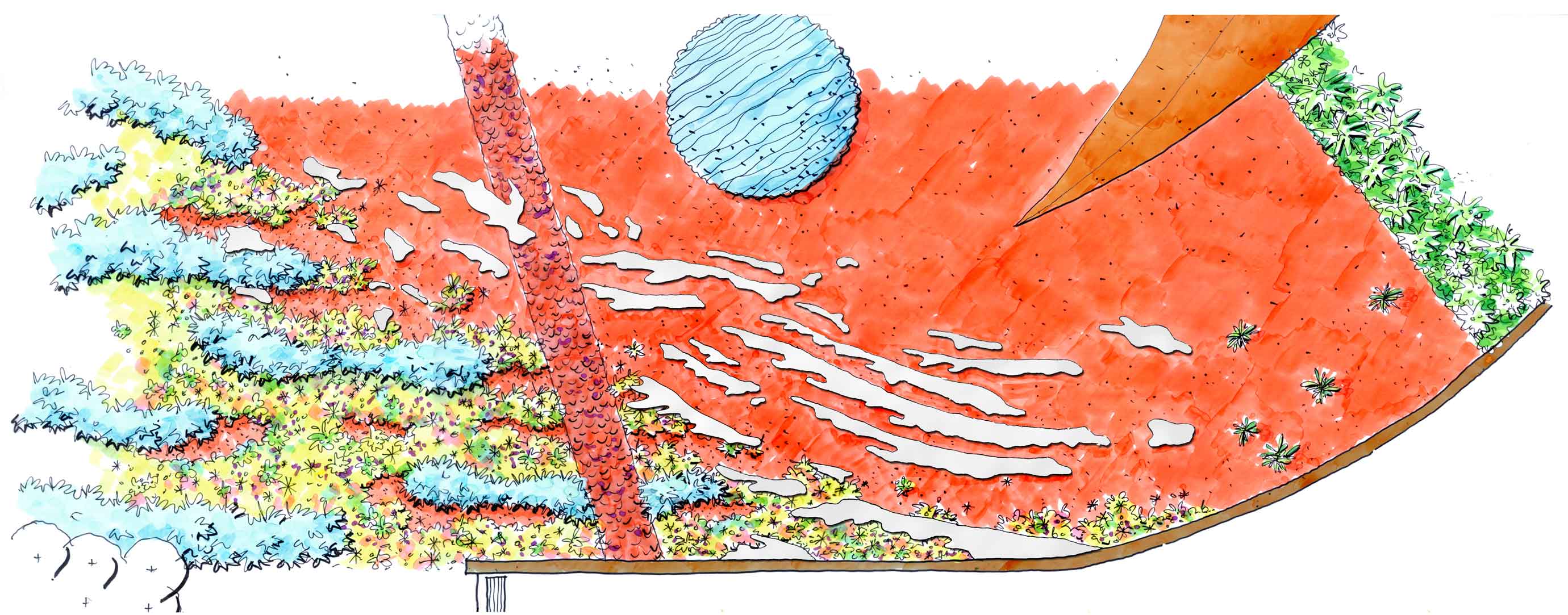
Sketch of the central sand garden
“Via the artistry of landscape architecture, this integrated landscape
brings together horticulture, architecture, ecology, and art to create
the largest botanic garden devoted to Australian flora.”
At the Australian Garden these tensions are the creative genesis of the design. On the east side of the garden, exhibition gardens, display landscapes, research plots and forestry arrays illustrate our propensity to frame and order our landscapes in more formal manners, whilst on the west, visitors are subsumed by gardens that are inspired by natural cycles, immersive landscapes and irregular floristic forms. Water plays a mediating role between these two conditions, taking visitors from rockpool escarpments, meandering river bends, melaleuca spits and coastal edges.
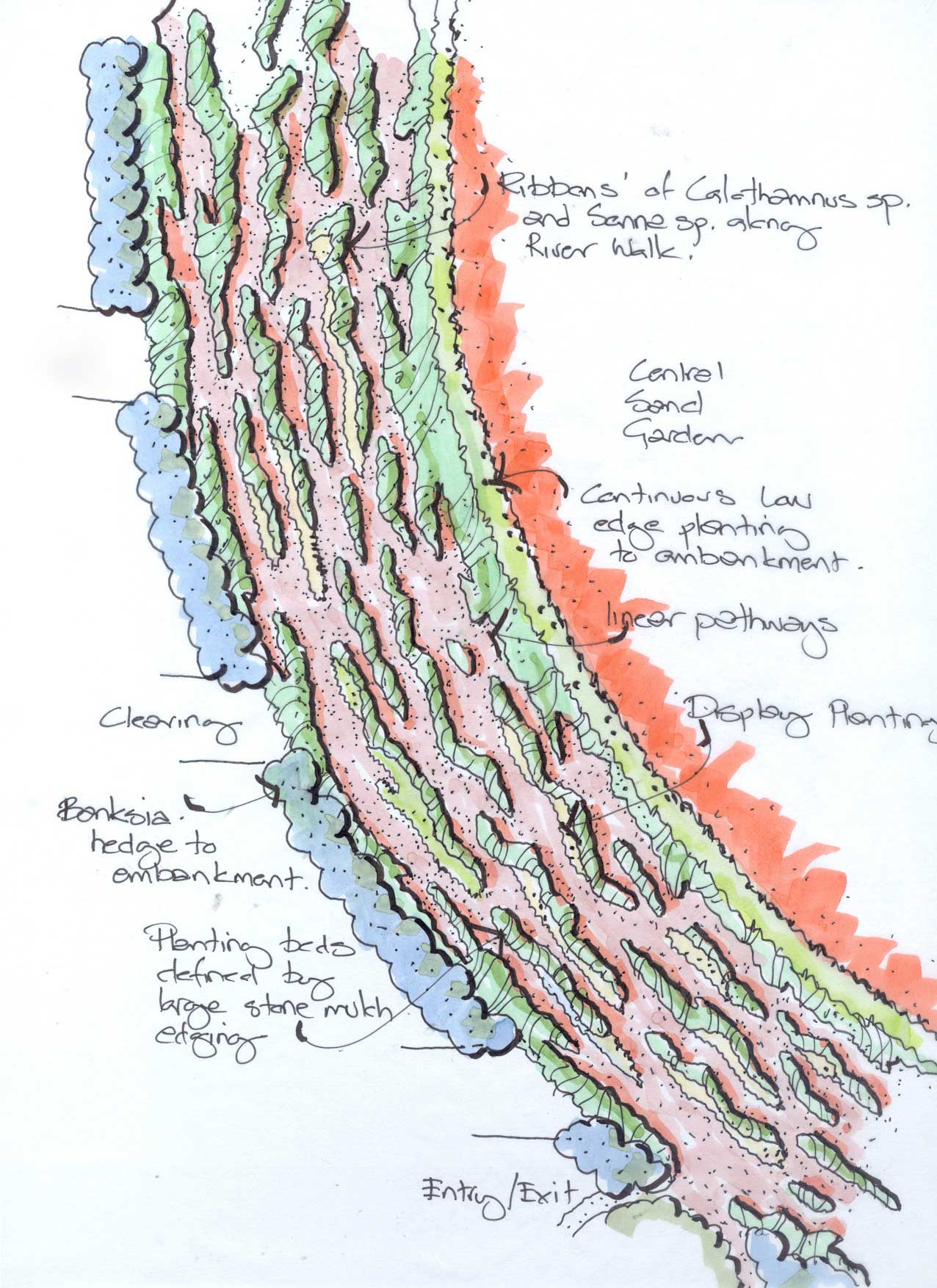
Sketch of the dry river walk
Gardens in Australia have traditionally been modelled on European precedents or more recently attempted to recreate the seductive qualities of the Australian landscape. The Australian Garden by contrast uses the Australian landscape as its inspiration to create a sequence of powerful sculptural and artistic landscape experiences that recognize its diversity, breadth of scale and wonderful contrasts. Via these creative landscape compositions, the project seeks to stimulate and educate visitors into the potential use and diversity of Australian flora.
Walking through the Australian landscape is a journey of constant weaves, shifts and jumps. One never travels in a straight line. The flora gets in the way! This choreography of movement, is captured in The Australian Garden, where visitors are taken on a distinctly unconventional journey. Visitors are invited into the landscape via a pathway system that constantly morphs according to the landscape narrative and garden experience. Crusty paths in the Gondwana Garden, shift to become over water circular grated plate which connects to a field of stones where the actual path is no longer apparent.
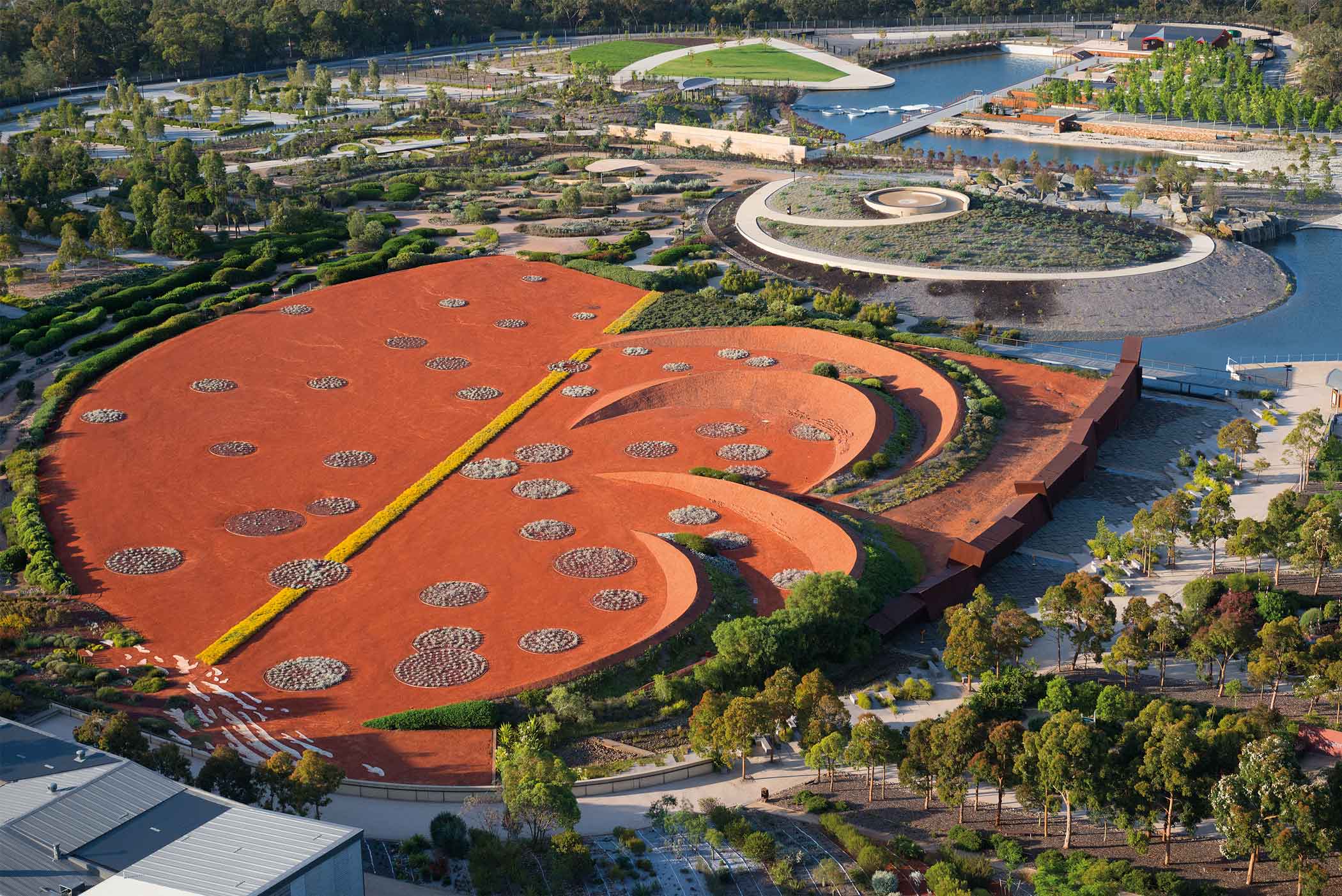
Aerial view over the Australian Garden
As is the largest botanic garden devoted to the display of Australian flora, the Australian Garden is now host to a vast collection of plants for scientific, educative, and conserva tion purposes. It plays a vital role in helping scientists and the public understand the history, present day uses and what the future may hold for plants in natural and urban environments. It embraces the importance of biodiversity and our increased understanding of the need to protect species and ecosystems to safeguard the world’s biological heritage. However, the garden performs another role, one as the new public realm for an ever expanding city. Messages of biodiversity and sustainability are integrated into its role as a new major visitor destination where not only do visitors come to explore the plant collections but to also be entertained, through interactive workshops, music, cinema, markets, cafes, and play.
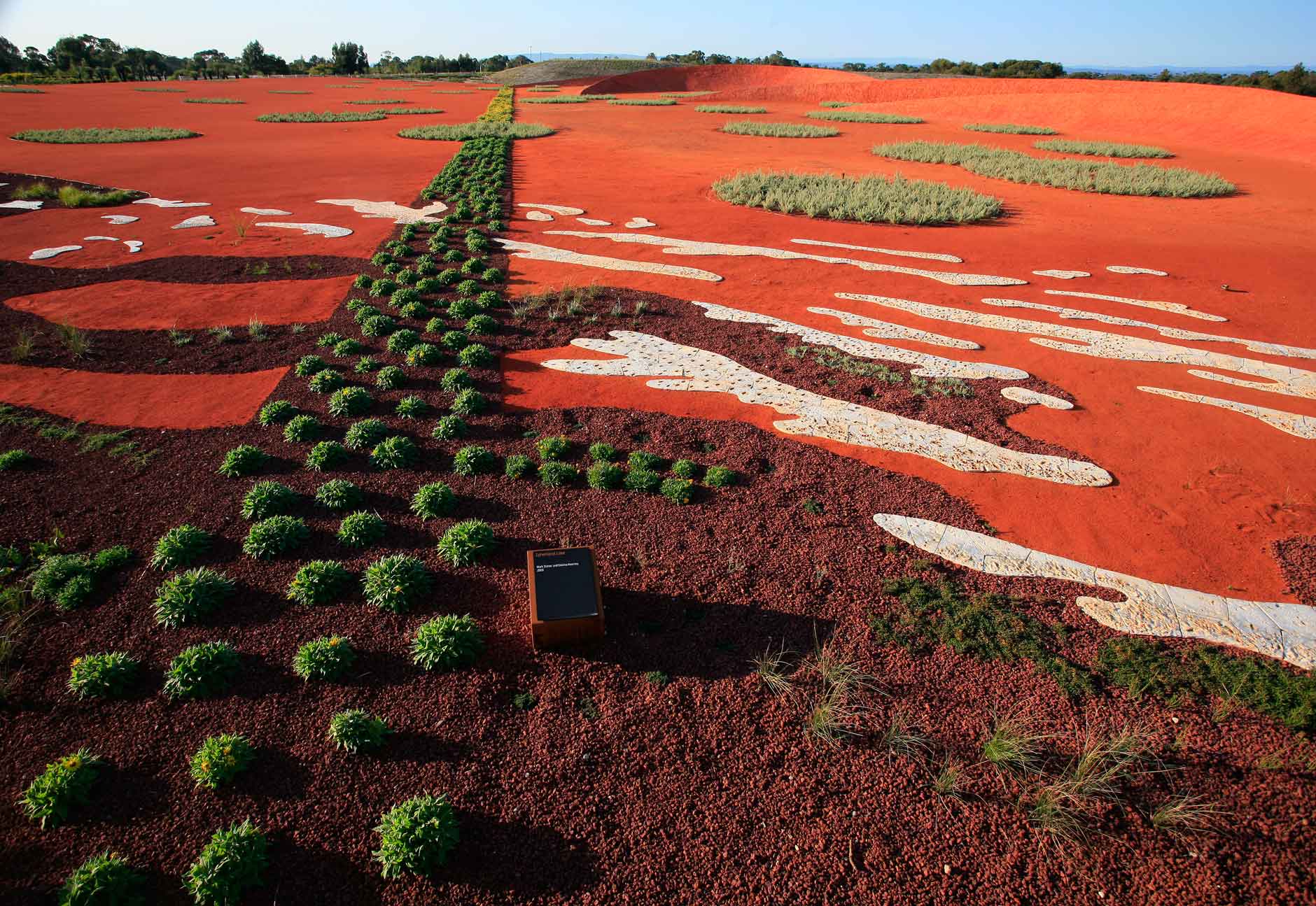
The central sand garden is an abstraction of Australia’s red, arid center.
Equally as there is not one linear narrative to describe the Australian landscape, the paths in the Australian landscape lead visitors on many journeys and many experiences.
“This is a garden of discovery, of multiple experiences and of cumulative knowedge.”
The Australian Garden is located in a former sand quarry that had denuded the vegetation and exhumed all traces of soil. Rather than importing new soil media, the design team, working with horticulturalist and designer, Paul Thompson, asked how could the design and selection of flora respond creatively to this challenging site condition. The outcome utilizes 170,000 plants across 1700 species all adapted to this challenging site condition, with species selected not only for their suitability to low organic media, but also their adaptation to low water utilization and drought tolerance.
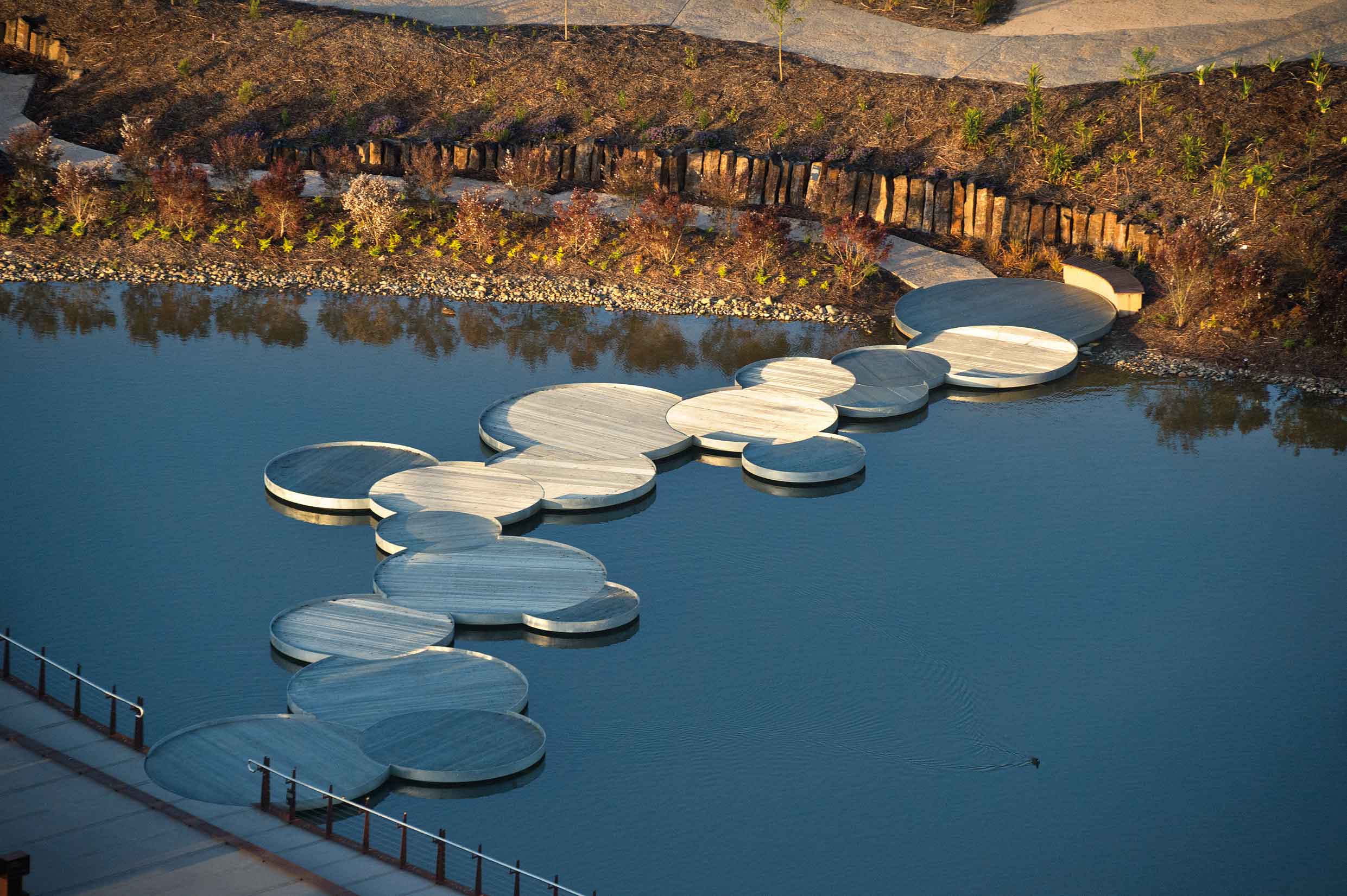
The Lily Pag Bridge connecting Elisabeth Murdoch Promenade and Gondwana Garden Path.
The Garden is considered to be at the forefront of emerging environmental concerns regarding biodiversity, low water dependent horticulture, water sensitive design and sustainable material choices. These issues are integrated into the overall composition, demonstrating that design is more than the sum of its parts but instead a totally holistic and creative outcome.
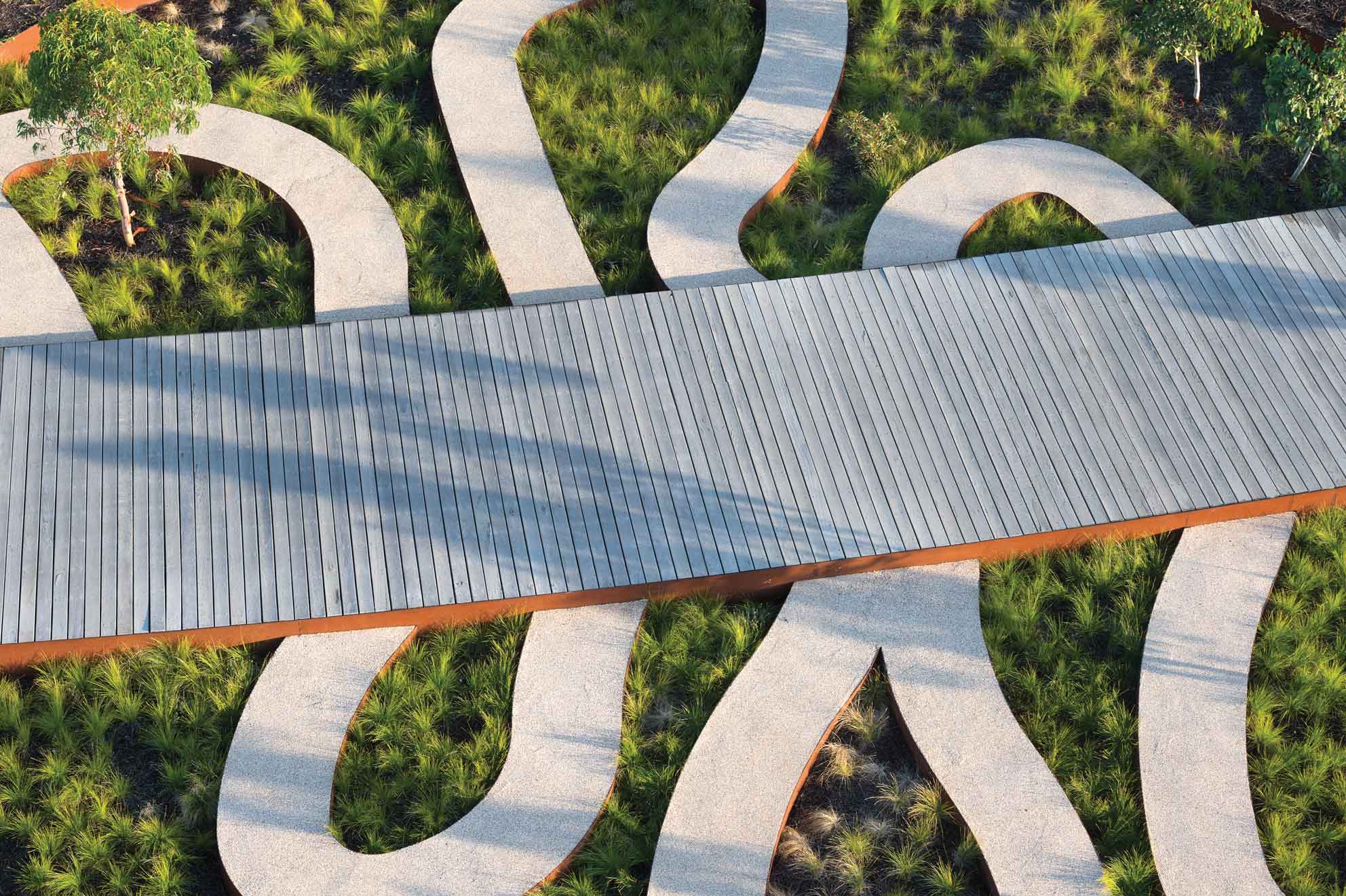
A playful series of paths within the Eucalypt Walk evoke the patterns found on the trunks of Eucalyptus haemastoma (Scribbly Gum)








